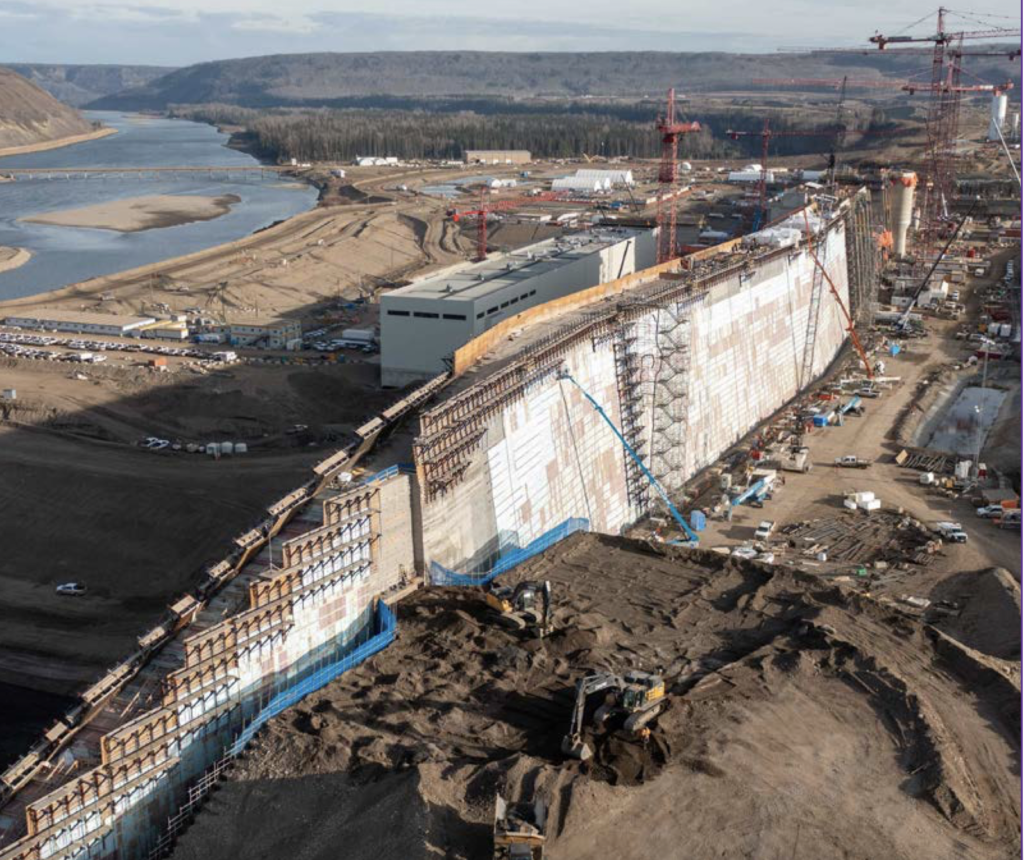
Bob Mackin
Site C had the highest rate of management and professional resignations in BC Hydro during the last fiscal year, according to a management briefing note.

Site C dam under construction (BC Hydro)
A Feb. 15 briefing note that studying pay increase guidelines, obtained via freedom of information, said there had been 101 resignations out of 2,896 active employees, a 3.5% average across nine business groups that reported resignations. The reasons for leaving the Crown utility corporation were not disclosed in the briefing note.
At Site C, the $16 billion megaproject, there had been 23 resignations out of 256 active management and professional employees, a 9% rate. That includes 10 leaving the 101-strong engineering group, seven quitting from the 61-person project controls, risks and services, and three exiting the 19-employee division that includes regulatory and communications workers — a rate of 15.8%.
BC Hydro’s operations department had the lowest resignation rate, at 0.6% (three workers out of 465), followed by safety and compliance’s 2.5% (3/122) and customer and corporate affairs’ 2.9% (8/77).
The briefing note said the executive team’s Jan. 25 meeting included discussion on how to use the management and professional salary increase budget that was awaiting approval at the people and culture committee the following week.
There were four options, three of which censored. The briefing note recommended higher common guidelines for all employees and hiking pay for specific jobs that are further behind market rates and/or experiencing more attraction and retention challenges.

BC Hydro headquarters (BC Hydro)
“This option provides higher salary increase guidelines that would be equally applied to all jobs and employees,” the briefing note said. “Salary increase guidelines are shared with employees and managers. A two-tiered salary increase model would generate a negative reaction from employees in the “have not” group.”
The data charts were censored, though one included a preamble that said BC Hydro sought labour market advice from Willis Towers Watson and Morneau Shepell (now LifeWorks).
The briefing note said the pay increases were forecast to reduce the gap between male and female salaries from 2.2% to 1.9%.
According to the December 2021 annual gender pay report, which only looked at management and professional salaries, there was no difference for unionized workers represented by MoveUp and International Brotherhood of Electrical Workers due to fixed wage rates in collective agreements.
“As there were no salary increases in 2021, we were not able to reduce this gap further compared to the previous year,” the briefing note said.
The briefing note said BC Hydro is committed to equal pay for equal work and its pay structures are set-up as gender neutral. In its annual monitoring report, females in BC Hydro management and professional jobs averaged one year younger than male counterparts and had six months less service.
“This accounts for part of the pay difference. However, a primary factor continues to be the underrepresentation of females in higher paying jobs, such as in engineering and operations,” the document said. “Until such time that the gender representation is more balanced in these groups or jobs are paid similar salaries, a salary gap will persist when comparing overall average salaries.”
According to Glassdoor.ca, which ranks corporate and government salaries, BC Hydro ranges from $96,678 to $183,559. “When factoring in bonuses and additional compensation, a manager at BC Hydro can expect to make an average total pay of $130,624 per year.”
BC Hydro’s 2021 statement of financial information, said it paid out $781.6 million in remuneration.
Support theBreaker.news for as low as $2 a month on Patreon. Find out how. Click here.











